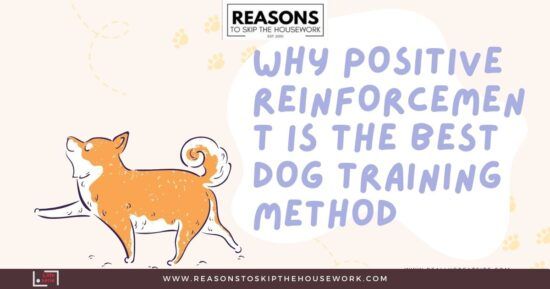Let’s be real—training a dog can sometimes feel like negotiating with a tiny, furry toddler who has absolutely zero respect for personal space. But the key to turning your mischievous pup into a well-behaved angel isn’t about dominance, punishment, or sounding like a broken record. It’s about positive reinforcement—the most effective, humane, and trust-building training method out there.

Contents
What is Positive Reinforcement?
I mean, who wouldn’t rather earn treats and belly rubs than get scolded? Your dog feels the same way. And if you’re serious about training the right way, dog training and obedience is the right way to start. Simply put, positive reinforcement is training that rewards good behavior instead of punishing bad behavior. The reward can be treats, praise, petting, or their favorite squeaky toy—whatever gets your dog excited to do the right thing.
Here’s an example: You say “sit,” your dog plops their furry butt on the ground, and—BOOM—instant reward. Over time, they realize that following commands = good things happen. It’s science-backed (thanks, B.F. Skinner!) and the best way to teach your dog in a way that actually sticks.
Why Positive Reinforcement is the Best Dog Training Method
1. It Strengthens Your Bond
Let’s be honest, your dog already thinks you’re the center of the universe. Why not reinforce that with training that makes them love and trust you even more? Positive reinforcement turns training into a fun, rewarding experience rather than something to dread.
2. It Makes Dogs Excited to Learn
When training feels like playtime, your dog is way more motivated to participate. Instead of acting out of fear, they’re actively trying to earn their next reward. Trust me, once they figure out the game, they’ll start offering behaviors before you even ask.
3. It Works Long-Term (Unlike Fear-Based Training)
Punishment-based training can stop bad behavior in the moment, but it doesn’t actually teach your dog what to do instead. Positive reinforcement, on the other hand, builds good habits that last without the risk of fear or aggression developing.
4. It Prevents Anxiety and Fear
Dogs trained with punishment tend to be more anxious, stressed, and even aggressive. Positive reinforcement builds confidence instead, helping your pup feel safe and happy while learning new skills.
5. It Works for All Dogs, No Matter the Age or Breed
Whether you’re training a puppy who still thinks shoes are chew toys or a rescue dog who needs to unlearn some bad habits, positive reinforcement works for every dog, every time.
6. It Turns Dogs into Problem-Solvers
Dogs who are rewarded for thinking critically start to figure things out on their own. Instead of waiting for commands, they begin offering behaviors that they know will earn rewards. (Basically, they learn to be their own best-trained selves—win-win.)
Dogs Make Us Happier—So Let’s Make Them Happier Too
Here’s the thing: dogs don’t just make our lives better, they actually improve our mental health. Studies show that owning a pet can reduce stress, ease loneliness, and even boost overall happiness. Want proof? Check out these psychological benefits of pet ownership.
If our dogs do so much for us, doesn’t it make sense to train them in a way that makes them feel safe, loved, and confident?
How to Use Positive Reinforcement in Training
If you’re new to this method, don’t worry—it’s easy to get started! Here’s what you need to know:
🐶 Use High-Value Rewards
Find out what your dog loves—whether it’s chicken treats, tennis balls, or belly rubs—and use it to your advantage.
🐶 Reward Immediately
Timing is everything. Reward the moment they do the behavior so they connect the dots instantly.
🐶 Be Consistent
Use the same command words and rewards every time. (And make sure everyone in the house is on the same page, because mixed signals = a very confused pup.)
🐶 Keep It Short and Fun
No hour-long lectures—your dog’s attention span isn’t built for that. Keep training short, fun, and engaging (5-15 minutes per session).
🐶 Gradually Reduce Treats
Once they get the hang of things, start swapping out treats for praise, petting, or playtime—so they don’t turn into treat-demanding little divas.
Common Myths About Positive Reinforcement Training
Let’s debunk some of the biggest myths floating around:
🚫 “Dogs need to know who’s boss.”
Nope. Modern science debunks the outdated dominance theory. Dogs don’t need an “alpha” figure—they need a consistent, kind leader.
🚫 “It only works if your dog is food-motivated.”
Not true! Some dogs prefer toys, praise, or playtime over treats—you just have to find what works best for them.
🚫 “Punishment works faster.”
Maybe in the short term, but fear-based training leads to long-term issues like anxiety and aggression. Positive reinforcement creates better behavior that lasts.
Final Thoughts: Train Smarter, Not Harder
Look, dog training should be fun, effective, and rewarding—for both of you. Positive reinforcement ticks all the boxes, making learning an enjoyable experience that actually strengthens your bond.
If you want a well-mannered, happy, and confident pup, ditch the outdated punishment methods and embrace positive reinforcement. Trust me, your dog (and your sanity) will thank you.
